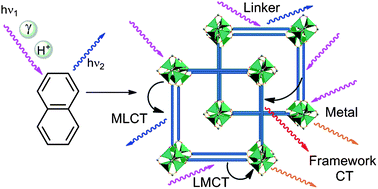Connecting structure with function in metal–organic frameworks to design novel photo- and radioluminescent materials†
Abstract
The exemplary structural versatility and permanent porosity of Metal–Organic Frameworks (MOFs) and their consequent potential for breakthroughs in diverse applications have caused these hybrid materials to become the focus of vigorous investigation. These properties also hold significance for applications beyond those traditionally envisioned for microporous materials, such as radiation detection and other luminescence-based sensing applications. In this contribution we demonstrate that luminescence induced by ionizing radiation (also known as scintillation) is common in appropriately designed MOFs and describe how this property can be harnessed to generate novel materials useful for detecting radiation. Through a diverse selection of MOFs, we explore the structural properties of MOFs that give rise to scintillation and photoluminescence in these materials. These results enable us to define a new structure-based hierarchical system for understanding luminescent properties in MOFs. Finally, we describe some performance metrics for MOF-based scintillation counters, such as luminosity and resistance to radiation damage, and discuss how these materials relate to the current state of the art in scintillation counters.

- This article is part of the themed collection: Integrating functionality into metal–organic frameworks

 Please wait while we load your content...
Please wait while we load your content...